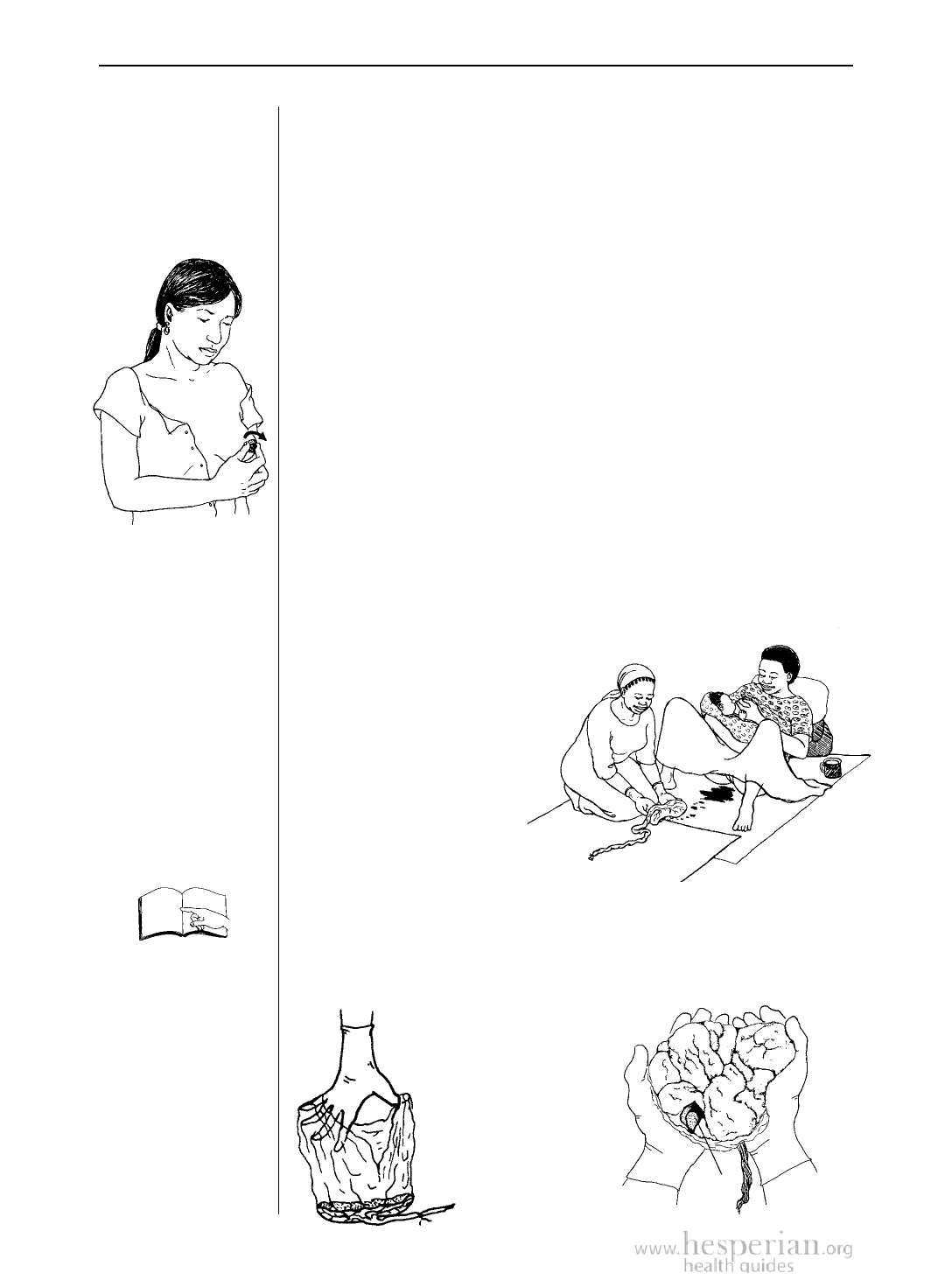
84 Pregnancy and Childbir th
Rolling the nipples
can help the womb
contract and stop
bleeding.
➤ When the placenta
is out, put it in a bowl
and check it to make
sure it is all there.
92
too much bleeding
Stage 3: The placenta comes out
When the baby is wrapped and at the mother’s breast, it is
time for the placenta to come out.
Watch the vagina to see when the cord gets longer. This
means the placenta is separating from the womb. Also watch to
make sure there is no heavy bleeding. When the cord lengthens,
tell the mother to push out the placenta. Do not pull on the cord.
If the placenta does not come out right away and there is no
bleeding, it is OK to wait up to 1 hour.
To help the placenta come out:
• Have the mother squat and push. If she cannot push, have
her blow into a bottle, sneeze, or cough.
• Ask the mother to pass urine.
• Encourage the baby to nurse, or have someone roll the
mother’s nipples. This will help make her womb contract.
• If nothing else works, give her an injection of 10 Units of
oxytocin in her buttock or thigh. Or give 600 micrograms of
misoprostol by mouth (see the Green Pages).
• If the mother starts to bleed, see page 92.
Check the placenta
Usually the placenta comes
out whole, but sometimes a
piece gets left inside. This
could cause bleeding or
infection later. To see if
everything has come
out, check the top and
bottom of the placenta,
and the membranes from
the bag of waters.
If the mother is bleeding, or there seems to be a piece of the
placenta or membranes missing, follow the instructions on page
92 for too much bleeding.
Try to make sure
the membranes
are all there. You
should be able
to imagine them
fitting together as
a sack.
piece
missing
Where Women Have No Doctor 2012